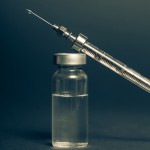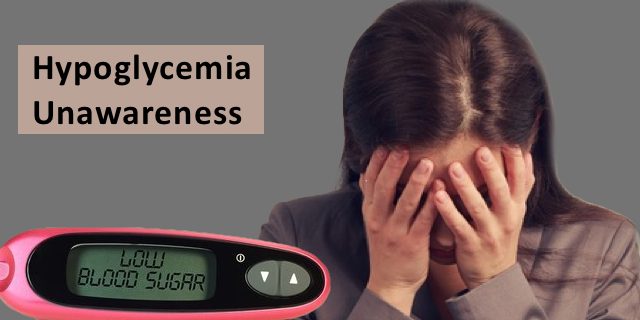What Is Hypoglycemia?
Hypoglycemia is low blood sugar. This occurs when blood glucose levels fall below 70 mg/dl.
Normally, when you eat food, the pancreas detects the presence of glucose, fatty acids and amino acids in the small intestines. It secretes insulin into the bloodstream. Insulin acts on the liver, telling it to start building glycogen from that glucose. It also tells the cells of the body to absorb glucose and other nutrients from the blood stream. Insulin, in effect, lowers the amount of sugar in your blood. [For a detailed review of glucose and and what happens in the course of digestion please read the post on carbs and carb counting.]
 The pancreas does not work this way for those with type 1 diabetes or insulin-dependent diabetes. If there is too much insulin in the blood and not enough sugar or glucose, the situation can be dangerous and even life threatening.
The pancreas does not work this way for those with type 1 diabetes or insulin-dependent diabetes. If there is too much insulin in the blood and not enough sugar or glucose, the situation can be dangerous and even life threatening.
Hypoglycemia can happen for a number of reasons. Sickness can increase the chances of low blood sugar. Growth spurts in children can make estimating the amount of insulin needed difficult. Getting more exercise than usual, eating later or missing a meal or snack can cause low blood sugar.
Early Symptoms of Low Blood Sugar
Knowing the early symptoms of hypoglycemia is crucial for those with type 1 diabetes and for their caregivers. These include:
- Sweating
- Pale skin
- Shaking
- Pounding heart
- Hunger
- Headache
- Dizziness
- Irritability
- Weakness
- Frequent sighing
- Nausea or vomiting
As hypoglycemia progresses, the symptoms change.
Late symptoms of low blood sugar
- Confusion
- Blurred vision
- Impaired coordination
- Personality change
- Numbness in the mouth
- Seizures
- Fainting
- Agitation
Reliance on Others
If hypoglycemia has progressed to seizures and unconsciousness, people around you will need to intervene. Prepare family and friends to help you. It is important that you let people you are with know how to help you in case of hypoglycemia. Make sure they know to call 911 or, if they are family, caregivers or friends, they may be able to administer glucagon from your kit.
Hypoglycemia Unawareness
Hypoglycemia unawareness occurs in around 20% of people with diabetes. They do not experience the symptoms of hypoglycemia. Hypoglycemia unawareness is more likely in people who have had diabetes for a long time or who have had many episodes of hypoglycemia.
Strategies to raise your blood sugar level
If your blood sugar is too low (less than 70 mg/dl), it’s important to bring your level up immediately. Drink half a cup of orange juice or half a cup of  apple juice. You can also take a tablespoon of honey, molasses or corn syrup. Many people buy 5mg tabs of glucose and take 3 of them when they are low.
apple juice. You can also take a tablespoon of honey, molasses or corn syrup. Many people buy 5mg tabs of glucose and take 3 of them when they are low.
Wait fifteen minutes and then take a blood sugar reading.
Coping With Hypoglycemia Unawareness
If you have hypoglycemia unawareness, you need to take steps to reduce the likelihood of blood sugar lows. One suggested strategy is to set your target blood sugar levels higher. Reducing the frequency of low blood sugars may help bring your awareness of hypoglycemia back. Discuss this strategy with your physician.
Another strategy is to always test your blood sugar levels before doing an activity that requires full attention, like driving. Test and retest your levels before and after exercise.
Be prepared for low blood sugar rescues. Have your kit prepared and with you at all times with glucose tablets, hard candy and/or juice boxes.







I have struggled for years I am having 5 or 6 injections a day and up to 8 or 10 blood tests a day
I began experiencing hypoglycemia unawareness about 9 years ago. My medical team and I decided to put me on an insulin pump. It has been 8 years since I started my pump and I’ve had much better blood sugar control. As of today I’ve been type 1 for 57 years.
Thank you so much for sharing your story. Kathleen
thanks for sharing this article about Hypoglycemia.
When I had symptoms of hypoglycemia I used to take a spoon of glycerin, it is not mentioned above, pity. Glycerin acts very quickly, its readily available in pharmacies without prescriptions, no side effects, and even tastes nice, and is rather cheap
Hi Dan, Thank you for sharing. Kathleen
Added curry and Turmeric to diet..was using 120 units N & R daily…now less than 40 units…6 months ago I started with A1C of 8.5% now it’s 6.4%
My friend’s mom suffers from hypoglycemia; I’m glad there are more options out there now to help.
Thanks for all this crucial information. I did not know alot of this.
This was a helpful article..
Thank you Nancy. I appreciate your comment. Kathleen